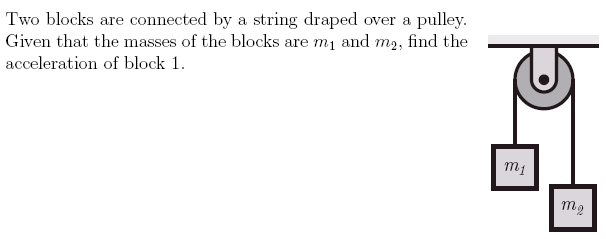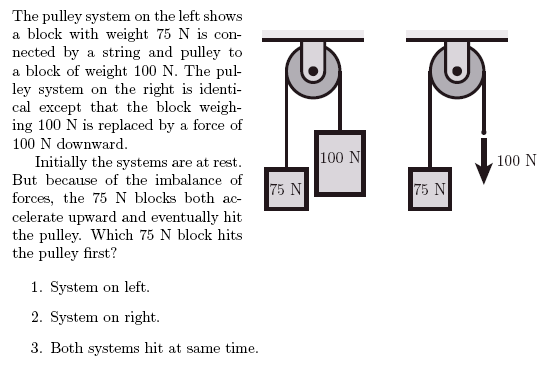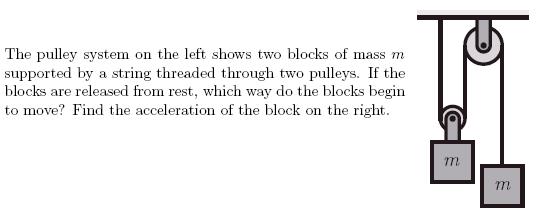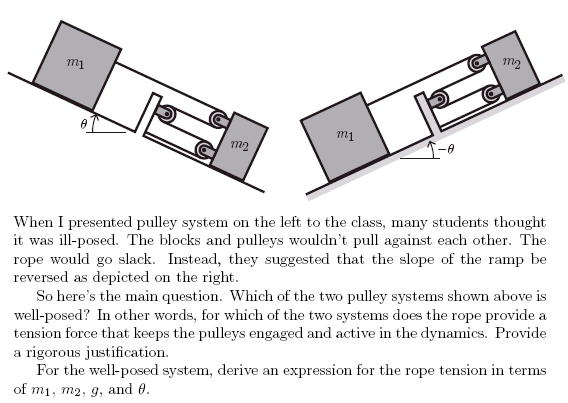Pulley Problems
The following are a bunch of pulley exercises and problems. If you can work through and understand them you should be able to solve most standard pulley problems.
- The Usual Pulley Assumptions
- A Simple Pulley Problem
- Pulley Multiple Choice
- A Real Pulley Problem
- Thought Provoking Pulley Problem
The Usual Pulley Assumptions
When working through pulley problems in Engineering Dynamics, we will usually make the following assumptions.
- We can neglect the mass of the pulley.
- We can neglect friction in the pulley’s bearing.
- We can neglect the mass of the rope/string/cord/cable.
- The rope/string/cord/cable does not stretch.
The following video explains how these assumptions make solving pulley problems easier.
Unless stated otherwise, we will regard these assumptions as valid.
A Simple Pulley Problem
Here’s a simple problem that serves as a springboard to learning how to solve pulley problems.
We work through the answer in the video below.
With just a little extra work it is possible to determine the tension too. The tension might be surprising.
Pulley Multiple Choice
Here is a classical pulley problem that asses your understanding of basic mechanics concepts. It is a multiple choice problem. I’m not particularly interested in how you answer. I’m more interested in whether you can form a rigorous argument, based on Newton’s Second Law.
Here’s a video outlining how I solve the problem.
Now for a real pulley problem
Here’s a real pulley problem that requires one to do some real kinematic analysis of the pulley.
In Part A below, we draw free body diagrams, write equations of motion, and begin working out the pulley kinematics.
In Part B, we finish the pulley kinematics and solve for the acceleration.
A thought-provoking pulley problem
Here’s a pulley problem that makes you think more deeply about the pulley kinematics recipe presented in the previous video. It also make you think more deeply about whether a pulley problem is well posed or not.
Here is Part 1 of the video solution. In it, I derive equations of motion, and work out the pulley kinematics.
In Part 2, I solve for tension and interpret the result.



